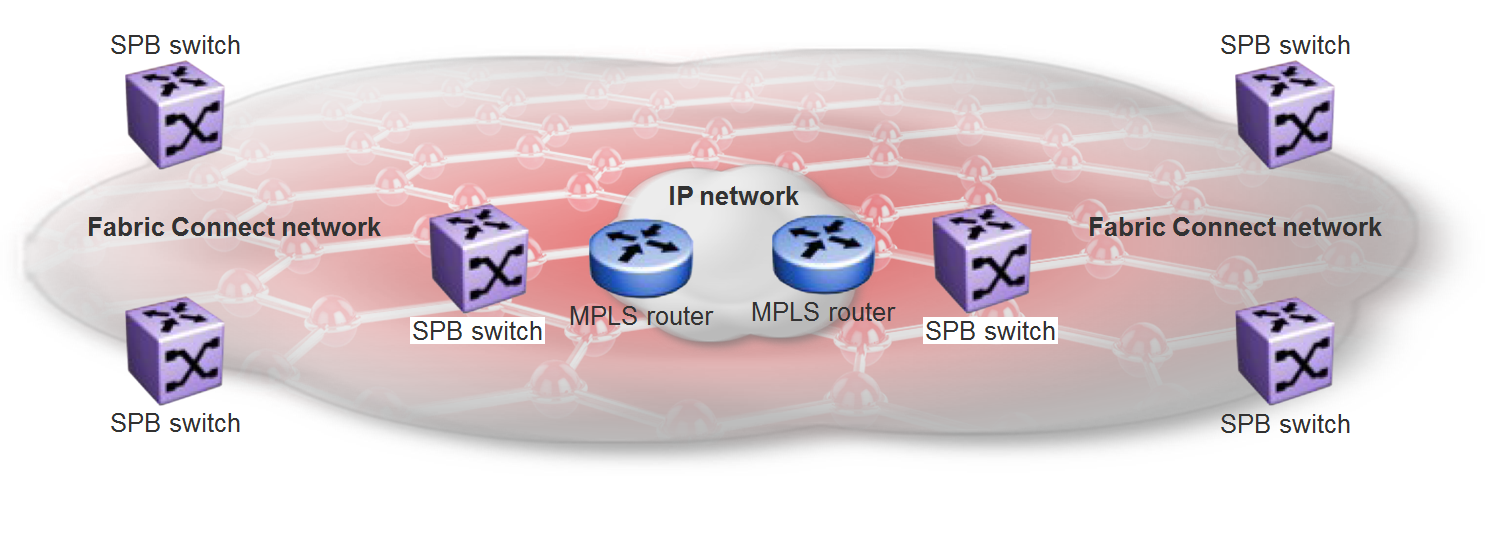Fabric Extend
|
Feature |
Product |
Release introduced |
|---|---|---|
|
Fabric Extend Note:
XA1400 Series does not support FE-VID. |
5320 Series |
Fabric Engine 8.6 |
|
5420 Series |
VOSS 8.4 |
|
|
5520 Series |
VOSS 8.2.5 |
|
|
5720 Series |
Fabric Engine 8.7 |
|
|
7520 Series |
Fabric Engine 8.10 |
|
|
7720 Series |
Fabric Engine 8.10 |
|
|
VSP 4450 Series |
VOSS 5.0
Note:
Requires an Open Networking Adapter (ONA). |
|
|
VSP 4900 Series |
VOSS 8.1 |
|
|
VSP 7200 Series |
VOSS 5.0 |
|
|
VSP 7400 Series |
VOSS 8.0 |
|
|
VSP 8200 Series |
VOSS 5.0 |
|
|
VSP 8400 Series |
VOSS 5.0 |
|
|
VSP 8600 Series |
Not Supported |
|
|
XA1400 Series |
VOSS 8.1.50 Note:
XA1400 Series does not support FE-VID. |
|
|
Fabric Extend over IPsec |
5320 Series |
Not Supported |
|
5420 Series |
Not Supported |
|
|
5520 Series |
Not Supported |
|
|
5720 Series |
Fabric Engine 8.7 5720-24MXW and 5720-48MXW using Fabric IPsec Gateway |
|
|
7520 Series |
Fabric Engine 8.10 using Fabric IPsec Gateway |
|
|
7720 Series |
Fabric Engine 8.10 using Fabric IPsec Gateway |
|
|
VSP 4450 Series |
Not Supported |
|
|
VSP 4900 Series |
VOSS 8.3 VSP4900-12MXU-12XE and VSP4900-24XE using Fabric IPsec Gateway |
|
|
VSP 7200 Series |
Not Supported |
|
|
VSP 7400 Series |
VOSS 8.2 using Fabric IPsec Gateway |
|
|
VSP 8200 Series |
Not Supported |
|
|
VSP 8400 Series |
Not Supported |
|
|
VSP 8600 Series |
Not Supported |
|
|
XA1400 Series |
VOSS 8.0.50 |
Some hardware platforms support Fabric Extend natively. You can use these switches in a main office of a hub and spoke deployment or to connect one Data Center to another Data Center.
The VSP 4450 Series also supports Fabric Extend, but the switch must be connected to an Open Networking Adapter (ONA) because the VSP 4450 Series does not support Fabric Extend natively. The ONA enables the VSP 4450 Series to support Fabric Extend. The VSP 4450 Series uses the ONA to encapsulate Fabric Connect traffic. For example, you can use the VSP 4450 Series in a branch office of a hub and spoke deployment.

Note
In a Layer 2 core Fabric Extend solution, the VSP 4450 Series does not require an ONA because the tunnels are point-to-point VLAN connections, not VXLAN connections. Therefore, there is no need for an ONA to encapsulate a VXLAN header to SPB packets.
Fabric Extend enables Enterprises to extend the Fabric Connect technology over Layer 2 or Layer 3 core networks. The logical IS-IS interface is the mechanism that enables Fabric Extend to connect SPB fabric nodes. When connecting to a Layer 3 core network, logical IS-IS interfaces create virtual tunnels and encapsulate SPB traffic by adding a VXLAN header to SPB packets.
The following figure illustrates two Fabric Connect “islands” separated by a third-party core IP network. The IP network could be third-party equipment in an enterprise or a service provider‘s infrastructure such as an MPLS VPN service.

The following figure illustrates how Fabric Extend enables you to connect the fabric islands to create ONE Fabric Connect network. This figure shows a Layer 3 core network where Fabric Extend uses IP tunneling by adding a VXLAN header to the SPBM packets. This can be over a third party IPv4 transport network such as MPLS IP-VPN or in a Campus IP backbones.

The following figure shows a Layer 2 core network where Fabric Extend can transport SPBM packets over a Layer 2 MPLS VPLS or PBB E-LINE service by creating layer 3 tunnels over a Layer 2 third party network.

Advantages of Fabric Extend
Fabric Connect is an Ethernet-based, industry-standard (IEEE 802.1aq) networking virtualization solution. With Fabric Connect, you can have thousands of virtualized service instances at any point in the network. Other Fabric Connect advantages include rapid time to service, Layer 2 and Layer 3 Unicast and IP Multicast virtualization, and scalable IP multicast. But the most significant advantage of Fabric Connect is that you provision services at the network edge only, not the core.
The Fabric Extend feature enables you to extend the Fabric Connect model over Layer 2 and Layer 3 core networks. The interconnection of Fabric Connect deployments can be over any IP-based network whether it‘s a campus backbone, Data Center, or a MAN/WAN IP MPLS network.
With Auto-sense enabled, Fabric Extend leverages LLDP to establish Fabric Extend tunnels automatically between a Fabric switch and the SD-WAN Appliance. Based on the LLDP standard, Fabric Extend information is transmitted using TLVs with LLDP Protocol Data Units (PDU) automatically.

Important
Fabric Extend Integration with ExtremeCloud SD-WAN is added to the document in advance of feature support. Feature support is planned for 8.10.1.
For more information, see Auto-sense Port States.

